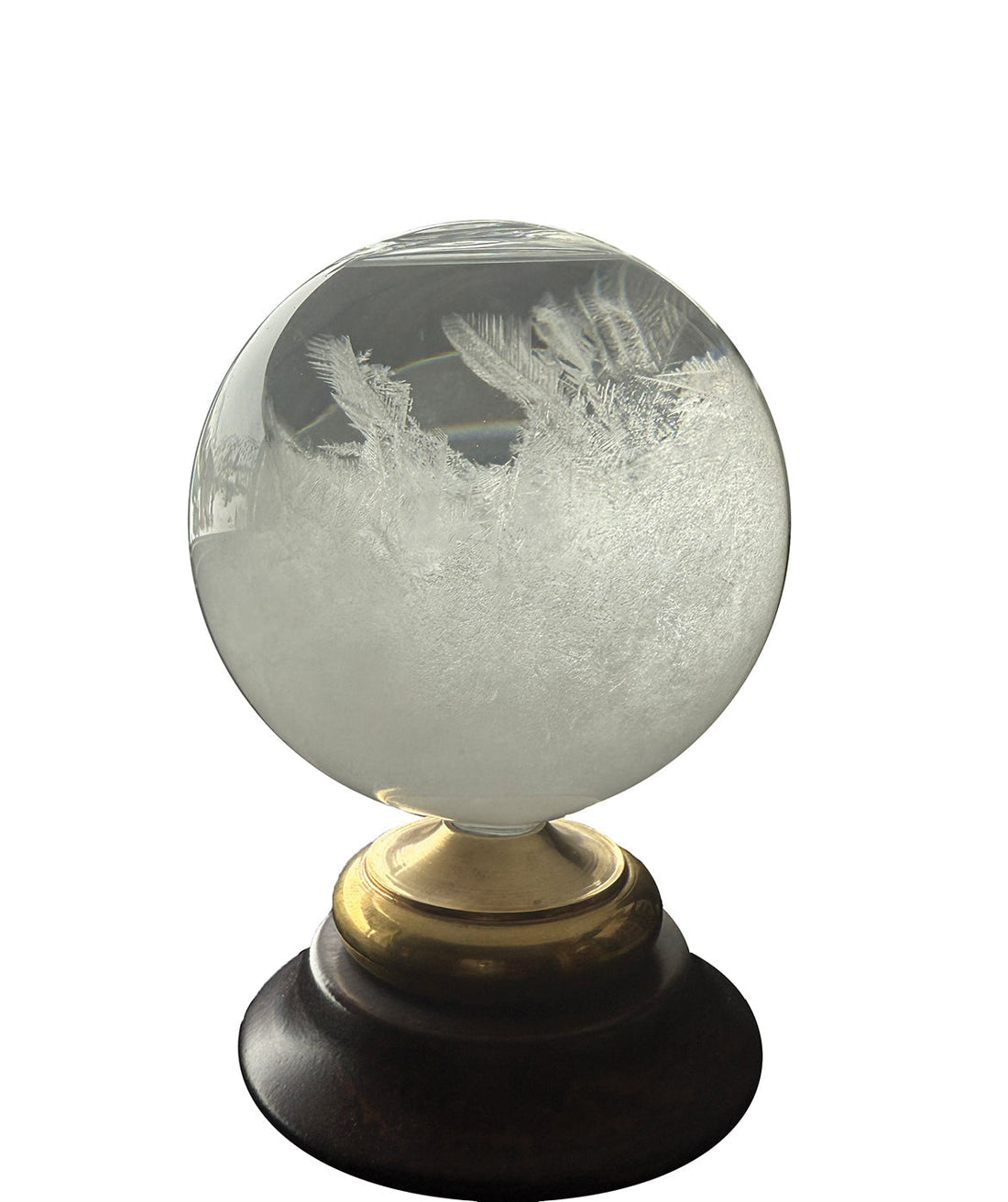Through the Storm Glass

Outside my office window at Alta, UT, is a cloudless cobalt sky. It’s an unwelcome sight for the avid powder skier. But my gaze drifts lower and I find hope on my windowsill. It originates from a swirl of crystalline feathers cocooned within a glass orb. More dramatic than any snowflake I’ve seen, the delicate shards of crystal suspended in liquid are constantly growing, morphing or shrinking. The crystal ball on my desk encapsulates not only my fortune, but that of every skier at Alta.
The Fitzroy Storm Glass is a primitive instrument dating back to the 18th century. The device was popularized by Admiral Robert Fitzroy of the Royal Navy who captained the H.M.S. Beagle on the very voyage when Charles Darwin incubated his theories on evolution in the 1830s. Fitzroy kept himself busy recording meteorological data and charting the ship’s course while Darwin dedicated himself to finches and fossils.
Fitzroy firmly believed that the supersaturated mixture confined within the storm glass’ 3-inch sphere was reactive to minor fluctuations in atmospheric pressure. The Admiral was partial to a precise solution of distilled water, ethanol, ammonium chloride, camphor and potassium nitrate. The solubility of the chemical mixture was supposedly sensitive enough that surrounding atmospheric conditions would spawn a matrix of snowflakes, stars, delicate feathers or thin threads within the clear mixture.
Subscribe for access to this article plus the entire archive of The Ski Journal content—and receive a discount on all products. Subscribe Now
